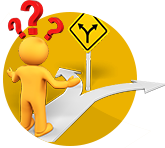Plate Tectonics
From Continental Drift to Plate Tectonics
- Until the late 1960s, most geologists believed that the positions of the continents and ocean basins were fixed.
- Continental drift, a hypothesis that challenged this belief, was first proposed in 1915.
- After World War II, scientific developments led to the unfolding of the theory of plate tectonics.
- Plate tectonics refers to the movement of lithospheric plates that shifts continents and causes volcanism, earthquakes, and mountain building.
Continental Drift: An Idea Before Its Time
- Alfred Wegener
- First proposed continental drift hypothesis in 1915
- Published The Origin of Continents and Oceans
- Continental drift hypothesis
- A supercontinent, consisting of all of Earth’s landmasses, once existed
- During the Mesozoic, ~200 million years ago, this supercontinent began fragmenting
- Wegener named the supercontinent Pangaea, meaning “all lands”
The Great Debate
- Why was Wegener unable to overturn the established scientific views of his day?
- Inability to identify a credible mechanism for continental drift
- Incorrectly proposed the gravitational forces of the Moon and Sun were capable of moving the continents.
- Incorrectly suggested that continents broke through the ocean crust like icebreakers.
- There was strong opposition to this hypothesis from all areas of the scientific community, and it was rejected.
- Inability to identify a credible mechanism for continental drift
The Theory of Plate Tectonics
- Following World War II, oceanographers with new equipment explored the seafloor
- Oceanic ridge system winds through all of the major oceans
- No oceanic crust older than 180 million years old
- Thin sediment accumulation in the deep oceans
- These developments and others led to the theory of plate tectonics.
- Figure 2.9, Rigid Lithosphere Overlies Weak Asthenosphere
- The lithosphere is comprised of the crust and upper mantle.
- The asthenosphere is a hotter, weaker region of the mantle under the lithosphere.
- Two layers move independently of each other.
- Figure 2.10, Earth’s Major Plates
- The lithosphere is broken into numerous segments called lithospheric plates.
- These plates are in constant motion.
- Plate Movement
- Plates move as somewhat rigid units relative to each other.
- Most interactions and deformations occur along plate boundaries.
Types of Plate Boundaries
- Types of plate boundaries:
- Divergent plate boundaries
- plates move apart and new seafloor is created
- Convergent plate boundaries
- plates move together, can create mountain belts or recycle oceanic lithosphere
- Transform plate boundaries
- plates grind past each other without the production or destruction of lithosphere
- Divergent plate boundaries
Divergent Plate Boundaries
- Also called constructive plate margins
- New ocean floor is generated as two plates move apart
- Most divergent plate boundaries are associated with oceanic ridges
- Oceanic ridge system is the longest topographic feature on Earth’s surface
- Exceeds 70,000 kilometers in length
- Oceanic Ridges and Seafloor Spreading
- Along the crest of the ridge is a canyon-like feature called a rift valley
- Seafloor spreading is the mechanism that operates along the ridge system to create new ocean floor.
- Spreading Rates
- The average spreading rate is 5 centimeter/year
- Mid-Atlantic Ridge has a spreading rate of 2 centimeter/year
- East Pacific Rise has a spreading rate of 15 centimeter/year
- Continental Rifting
- Occurs when a divergent plate boundary occurs within a continent
- A landmass will split into two or more smaller segments
- A continental rift, an elongated depression, will develop where continental crust sinks.
- Eventually the depression lengthens and deepens, forming a narrow sea, and then a new ocean basin.
- Example: East African Rift
Convergent Plate Boundaries and Subduction
- Two plates move toward each other and leading edge of one slides beneath the other
- Where lithosphere descends (subducts) into the mantle: subduction zones
- Deep-ocean trenches are long, linear depressions in the seafloor
- Produced when oceanic lithosphere descends into the mantle along subduction zones
- Examples include:
- Peru-Chili Trench
- Mariana Trench
- Tonga Trench
- Oceanic–continental convergence
- The denser oceanic slab sinks into the mantle beneath the buoyant continental block
- At a depth of ~100 kilometers, partial melting is triggered when water from the subducting plate mixes with the hot asthenosphere.
- This generates magma resulting volcanic mountain chain called a continental volcanic arc.
- Examples include:
- The Andes
- The Cascade Range
- Oceanic–oceanic convergence
- When two oceanic slabs converge, one descends beneath the other.
- As with oceanic–continental convergence, partial melting initiates volcanic activity.
- If the volcanoes emerge as islands, a volcanic island arc or island arc is formed.
- Examples include:
- The Aleutian Islands
- The Mariana Islands
Convergent Plate Boundaries
- Continental–continental convergence
- Continued subduction can bring two continents together.
- Less dense, buoyant continental lithosphere does not subduct.
- This results in continental collision and produces mountain belts of deformed rocks.
- Examples include:
- The Himalayas
- The Alps
- The Appalachians
Transform Plate Boundaries
- Also called a transform fault
- Plates slide horizontally past one another, without production or destruction of lithosphere.
- Most occur on the seafloor joining two spreading center
- Known as fracture zones
- Can move oceanic ridges toward subduction zones
- A few transform faults cut through continental crust
- Examples include:
- The San Andreas Fault
- The Alpine Fault of New Zealand
- Examples include:
Changing Plate Boundaries
- Although Earth’s total surface area does not change, the size and shape of individual plates are constantly changing.
- Plate boundaries migrate
- Plate boundaries are created and destroyed
- Breakup of Pangaea
- Formation of the Atlantic Ocean basin
- India collided with Asia to form the Himalayas
- Plate Tectonics in the Future
- Geologists use present plate motions to extrapolate plate movements into the future.
- Baja and southern California will eventually slide past the North American Plate
- Africa will continue to collide with Eurasia
- Geologists use present plate motions to extrapolate plate movements into the future.
Testing the Plate Tectonics Model
- Evidence from Ocean Drilling
- Some of the most convincing evidence has come from drilling directly into the ocean floor.
- Hundreds of holes were drilled through layers of sediments on the ocean floor and the basaltic crust
- Sediments increase in age with distance from the ridge crest
- Sediments are almost absent on the ridge crest and thickest furthest from the spreading center
- Pattern of distribution and thickness provided additional verification of seafloor spreading
- Some of the most convincing evidence has come from drilling directly into the ocean floor.
- Evidence from Hot Spots and Mantle Plumes
- A mantle plume is a cylindrically shaped upwelling of hot rock.
- The surface expression of a mantle plume is an area of volcanism called a hot spot.
- As a plate moves over a hot spot, a chain of volcanoes, known as a hot-spot track, forms.
- The age of each volcano indicates how much time has elapsed since it was over the mantle plume.
- Examples include:
- Hawaiian Island chain
- Yellowstone
- Evidence from Paleomagnetism
- Basaltic rocks contain magnetite, an iron-rich mineral influenced by Earth’s magnetic field.
- When the basalt cools below the Curie point, the iron-rich minerals become magnetized and align with the existing magnetic field.
- The magnetite is then “frozen” in position and, like a compass needle, indicates the position of the north pole at the time of rock solidification.
- This is referred to as paleomagnetism or preserved magnetism.
- Apparent Polar Wandering
- The apparent movement of the magnetic poles indicates that the continents have moved.
- It also indicates North America and Europe were joined in the Mesozoic.
- Magnetic Reversals and Seafloor Spreading
- Earth’s magnetic field reverses polarity periodically
- During a magnetic reversal, the north pole becomes the south pole, and vice versa.
- Rocks that exhibit the same magnetism as the present magnetic field exhibit normal polarity.
- Rocks that exhibit the opposite magnetism exhibit reverse polarity.
- Once this concept was confirmed, researchers established a timescale for these occurrences, called the magnetic time scale.
How is the Plate Motion Measured
- Geologic Measurement of Plate Motion
- Dates of ocean floor from hundreds of locations gathered by ocean-drilling ships
- By knowing the age of a sample and distance from the ridge axis, an average rate of plate motion can be calculated
- Combined with paleomagnetism data to make maps of the age of the ocean floor
- Measuring Plate Motion from Space
- Global Positioning System (G P S) data are collected at numerous sites over years
- Measure plate motions to the millimeter
What Drives Plate Motions
- Convection is the way heat transfers through liquids and gases.
- Forces That Drive Plate Motion:
- The subduction of cold, dense oceanic lithosphere is a slab-pull
- Elevated lithosphere at oceanic ridges will slide down due to gravity, causing the ridge-push
Plate-Mantle Convections
- Although not fully understand, researchers agree on the following:
- Plate tectonics and convective flow in the mantle are part of the same system.
- The energy source for plate tectonics is Earth’s internal heat.
- As a result, many models have been proposed although we will examine one type

Accounting Homework
Stuck with a homework question? Find quick answer to Accounting homeworks

Ask Accounting Tutors
Need help understanding a concept? Ask our Accounting tutors

Accounting Exams
Get access to our databanks of Discussion questions and Exam questions
How We Safeguard Your Tutor Quality
All tutors are required to have relevant training and expertise in their specific fields before they are hired. Only qualified and experienced tutors can join our team
All tutors must pass our lengthy tests and complete intensive interview and selection process before they are accepted in our team
Prior to assisting our clients, tutors must complete comprehensive trainings and seminars to ensure they can adequately perform their functions
Interested in becoming a tutor with Online Class Ready?
Share your knowledge and make money doing it
1. Be your own boss
2. Work from home
3. Set your own schedule


